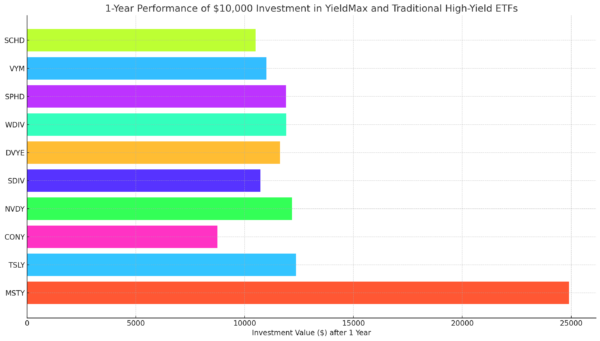Passive Income Dividend Investing
Do you have retirement savings? The earlier you open an IRA or 401(k) and start contributing, the better off you’ll be once you reach retirement age. You can’t rely solely on Social Security. It’s important to explore other methods of wealth accumulation for retirement, like passive income dividend investing.
What is Passive Income Dividend Investing?
Passive income dividend investing is a popular investment strategy. It involves buying dividend-paying securities and setting up a dividend reinvestment plan (DRIP).
The concept is simple. Using a retirement account, you invest in dividend stocks and reinvest those dividends as they’re paid. Each new share you buy through the DRIP pays its own dividend. This process repeats for decades, amassing great wealth so you can retire comfortably.
The second phase of the strategy is even simpler: Turn off the DRIP. Instead of reinvesting dividends, you’ll get passive dividend income just from owning the stocks. It’s a perfect way to supplement Social Security and pay retirement expenses.
Recognize Your Time Horizon
As with any dividend investing strategy, the longer you’re able to invest, the better your payout will be in retirement. A longer investment time horizon allows dividends to compound longer. When you finally reach retirement and turn off the DRIP, you’ll have enough dividend-paying shares to collect supplemental income.
Picking the Right Dividend Stocks
The key to maximizing your dividend investments is to pick the right stocks. Investing for passive income is about gauging the health of the dividend-paying company. Here are some factors to consider:
- Look for companies with a proven history of dividends. The longer they’ve offered a dividend, the better. As a rule of thumb, look for a dividend history of at least five years. For truly stable dividend-paying companies, check out the Dividend Aristocrats.
- Explore companies that have never lowered their dividend. Some companies have dividends that fluctuate without ever going away. Avoid these companies unless they have a healthy balance sheet and good long-term prospects.
- Value companies with a history of growing their dividend… but not too fast. Dividend growth stocks are powerful securities. They can boost your earnings over the decades. Just make sure the companies you’re investing in can sustain a growing dividend.
- Avoid companies with massive debt on their balance sheet or in cyclical industries. Debt can erase a dividend in times of economic downturn, and cyclical industries ebb and flow throughout the years. This makes it hard to gauge future dividend income.
It’s also a good idea to diversify your holdings across different sectors of the economy, as a hedge against downturn. If your dividend-paying energy stocks are down, your dividend-paying healthcare stocks might help buoy your portfolio.
Get Familiar with Tax Implications
Taxation on passive income from dividends is tricky. If they’re part of a DRIP, are dividends passive income? Does it matter what type of account your holdings are in? What about special dividend payments? Here’s the scoop:
- If you invest in dividend stocks through a retirement account, the taxation on your dividends is deferred the same as all retirement earnings until you withdraw from the account. This means your DRIP will continue to grow your wealth tax-free over time.
- If you invest outside of a qualified retirement account, dividend income—even reinvested—is taxable. If you hold the position for over a 60 day requirement, the dividends become qualified and are taxed at a lower capital gains.
One of the best ways to grow your passive dividend income in retirement is to invest in dividend-paying securities early. Allow them to grow tax-free via a DRIP, then collect the income in retirement, paying taxes on it then.
Also, be aware of the taxation differences between IRA, Roth IRA, 401(k) and 503(b) accounts. How your dividends grow and are taxed after retirement in each of these vehicles differs slightly.
Invest for the Endgame: Retirement
When investing in dividend-paying stocks, always keep the endgame in mind. You may not be collecting passive income from your stocks now, but that only means more income when you reach retirement age. Having the discipline to reinvest dividends now and buy more shares means benefitting from larger distributions when you turn off the DRIP.
Whether you’re in your early 20s or going on 40 and thinking more about retirement, make passive income a core focus. Not only is passive dividend investing a great way to grow your wealth, it’s a premier way to supplement Social Security in retirement.
Want to learn more about dividend investing? Check out our recent dividend research.





